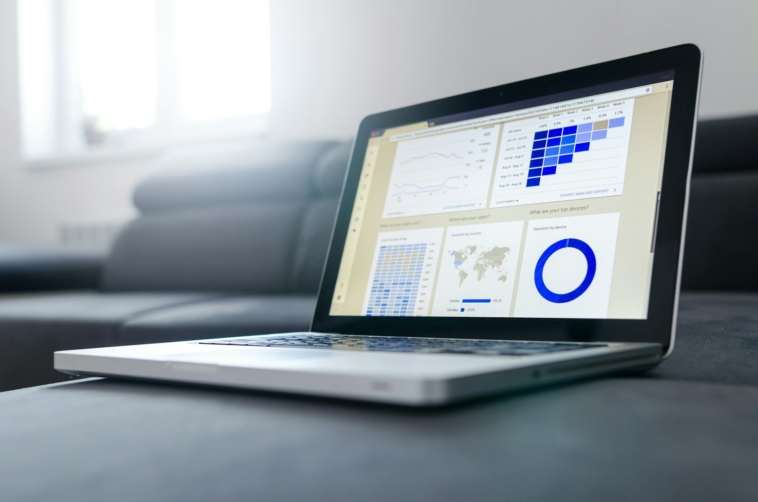To ensure your business stays competitive, making decisions based on gut feelings or assumptions will no longer suffice. Your competitors are likely using data analysis tools, to enable data-driven decision-making – so it’s essential that you do, too.
Organizations that prioritize data-driven decision-making are more agile, precise, and competitive. With the availability of swathes of data, professionals can easily analyze trends, discover new insights, and make decisions that lead to better outcomes.
Why Data-Driven Decision-Making Matters
Rather than using your intuition, data-driven decision-making uses data to guide your choices, rather than intuition or experience alone.
When you think about it, basing your decisions on data is also more efficient for organizations. You reduce your trials and errors and make faster, more informed choices. For instance, rather than testing a new marketing strategy based on assumptions, data-driven decision-making allows you to identify what works and what doesn’t from the get-go.
Making data-backed decisions also enhances transparency. Since decisions are backed by concrete data, they can be easily justified to stakeholders, clients, or team members. That way, everyone can see the reasoning behind each business decision you make.
Lastly, data-driven approaches are scalable. As your business grows, the volume and complexity of your decisions will increase, especially as you venture into uncharted territories. In that case, relying on intuition or manual methods becomes impractical over time.
For instance, legal practitioners, when using cloud-based, legal-specific software, efficiently manage case files, client data, and communication, especially as their practice becomes more complex.
3 Techniques for Data-Driven Decision-Making
The techniques professionals use to interpret and apply data are crucial to the success of data-driven strategies. Here are some of the critical techniques:
1. Descriptive Analytics
This is one of the first steps of data-driven decision as it provides a clearer picture of what has happened in the past. It uses historical data to understand past trends and performance.
For example, a company could use historical sales data to identify seasonal trends, like the holiday season for example. This can justify any decisions it makes to amp up the marketing spend to capitalize on the opportunity.
2. Predictive Analytics
Meanwhile, using predictive analytics will require you to anticipate future outcomes. Of course, this does not come with 100% certainty, but using these models gives you a better idea of what could happen next based on past trends and patterns.
An eCommerce company, for instance, can use predictive analytics to forecast demand for new products based on customer purchasing patterns. With this strategy, you will likely improve your inventory management.
3. A/B Testing
Also known as split testing, A/B testing allows organizations to compare two variations of a strategy to see which performs better. This technique is valuable for marketing campaigns, product launches, and website optimization.
It can be as simple as testing different locations of a call-to-action on the landing page. When the location of the CTA is optimized, it can eventually yield positive results.
3 Tools for Data-Driven Decision-Making
Of course, if you have the techniques, you’ll need the tools to properly execute them. These are some tools you can use
1. Tableau
Tableau is a leading data visualization tool known for its user-friendly drag-and-drop interface, which allows users to create interactive dashboards and comprehensive reports. It supports a wide range of data sources, including databases and cloud services, and offers advanced analytics features such as trend lines and forecasting.
Tableau’s interactive dashboards make it easy to explore data and identify trends, while its sharing capabilities through Tableau Server and Tableau Online facilitate collaboration across teams.
2. Adobe Analytics
Adobe Analytics is particularly effective in predictive analytics, using its advanced data processing capabilities to forecast future trends and behaviors. By integrating with Adobe Sensei, Adobe’s AI, and machine learning framework, Adobe Analytics can analyze historical data and identify patterns to predict future outcomes.
The platform allows users to build predictive models that can forecast various metrics such as customer churn, sales trends, and campaign performance.
For example, Adobe Analytics can assist in market segmentation and determine which segments are likely to engage with upcoming marketing campaigns based on past behavior and interactions. It also supports advanced techniques like cohort analysis and regression modeling, which can be used to anticipate customer lifetime value or the impact of different marketing strategies.
3. Optimizely
Optimizely is a top A/B testing and experimentation platform that helps organizations optimize their digital experiences by testing different variations of web pages and apps. It allows users to compare the performance of various versions in terms of user engagement and conversion rates.
With real-time results and integration with other analytics tools, Optimizely supports data-driven decision-making by identifying the most effective designs and strategies.
Final Thoughts
The future is data-driven, and organizations must follow suit to keep up with stiff competition. Although making decisions based on data won’t guarantee perfection, it gives credence to decisions grounded in facts rather than assumptions.
Provided that you use the right tools and techniques for your decision-making, you can use data as an asset that positions your organization for long-term success.

